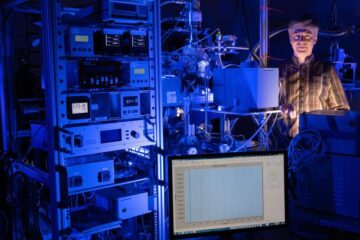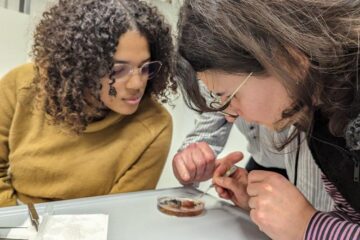Study details genes that control whether tumors adapt or die when faced with p53 activating drugs

A study published in the journal Cell Reports shows how: tumors that live even in the face of p53 reactivation create more of the protein p21 than the protein PUMA; tumors that die have more PUMA than p21. And, for the first time, the current study shows a handful of genes that control this ratio.
“The gene p53 is one of the most commonly mutated cancer genes. Tumors turn it off and then they can avoid controls that should kill them. Fine: we have drugs that can reactivate p53. But the bad news is when we go into the clinic with these drugs, only maybe one in ten tumors actually dies. We wanted to know what genes fine-tune this p53 effectiveness,” says Joaquin Espinosa, PhD, investigator at the University of Colorado Cancer Center, associate professor in the Department of Molecular, Cellular and Developmental Biology at CU Boulder, and the paper’s senior author.
To answer that question, the group including first author Zdenek Andrisyk, PhD, postdoc in the Espinosa Lab, turned off every gene in the human genome in turn and asked if there were genes that, when deactivated, would tip the balance from p21 to PUMA, thus enhancing the likelihood of cell death.
“We found a couple dozen genes involved in this ratio – genes that with p53 activated, lead to more p21 and better survival or more PUMA and more cell death,” Espinosa says.
The hope is that in addition to drugs that reactivate the tumor-suppressor gene p53, patients could be given a second drug targeting genes that control this p21/PUMA ratio, thus making first drug more effective. Likewise, in cases in which toxicity in healthy tissue limits the use of p53 activating drugs, Espinosa’s research could lead to new drugs that thumb the scale of the p21/PUMA ratio toward survival in these healthy tissues. Up or down: learning to adjust the ratio has immense promise.
The group’s next step is likely repeating the genetic screen with additional tumor and healthy cell lines to discover which of their newly discovered candidate genes are common controllers of the p21/PUMA ratio across cancer types. And, interestingly, the same technique could be used to make many existing drugs more effective.
“With many of these molecularly targeted therapies, you want one effect but then you end up with many other possible effects,” Espinosa says. (An example is the recently-reported side effect of low testosterone in male lung cancer patient taking the molecularly targeted drug crizotinib.) The genetic screening technique used in the Espinosa lab could help disentangle effect from side effect – showing which secondary genes regulate the desired, tumor-killing response and which secondary genes lead to undesirable side-effects.
“Not only could this technique lead to drugs that decrease the side effects of targeted therapies, but if you’re not limited by these side effects, you can simply give more drug, perhaps making existing drugs much more powerful,” Espinosa says.
Media Contact
More Information:
http://www.ucdenver.eduAll latest news from the category: Life Sciences and Chemistry
Articles and reports from the Life Sciences and chemistry area deal with applied and basic research into modern biology, chemistry and human medicine.
Valuable information can be found on a range of life sciences fields including bacteriology, biochemistry, bionics, bioinformatics, biophysics, biotechnology, genetics, geobotany, human biology, marine biology, microbiology, molecular biology, cellular biology, zoology, bioinorganic chemistry, microchemistry and environmental chemistry.
Newest articles

Peptides on Interstellar Ice
A research team led by Dr Serge Krasnokutski from the Astrophysics Laboratory at the Max Planck Institute for Astronomy at the University of Jena had already demonstrated that simple peptides…

A new look at the consequences of light pollution
GAME 2024 begins its experiments in eight countries. Can artificial light at night harm marine algae and impair their important functions for coastal ecosystems? This year’s project of the training…

Silicon Carbide Innovation Alliance to drive industrial-scale semiconductor work
Known for its ability to withstand extreme environments and high voltages, silicon carbide (SiC) is a semiconducting material made up of silicon and carbon atoms arranged into crystals that is…





















